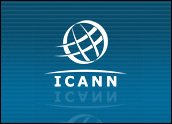
Most successful corporations, while producing wonderful products and services, knowingly or unknowingly do not own a single global iconic name brand identity that is both a universal, hassle-free name and a solid intellectual property asset.
Yes, they do own factories and buildings, they might own some local name registrations, one or two trademarks in one or two countries, and some URLs, too. But very rarely do companies possess a global icon with a clear and undisputed proprietor.
Though they might otherwise be very successful, such businesses pay very dearly for this oversight. And the problem is very common among 95 percent of big businesses all around the globe, from Moscow to Manhattan, Karachi to Dubai, Beijing to Delhi.
Doubt me? Simply enter any corporate or product brand name on Google and the results will be pretty obvious.
To begin with, developing an exclusive ownership is a very easy and very affordable task.
To own or not to own is the next big question.
Too Old To Play
It all started with antiquated business nomenclature from the pre-globalization era; names like ACME This, Allied That or General This and General That predominated. Basically, during the earlier inceptions of business branding, there were no rules, as there were no competitors. Whatever identity one picked as a name brand simply became the icon.
Kraft, Gillette, BMW, Mellon, Toyota, IBM and General Motors — these were some of the lucky ones, let’s say, a century ago.
In the new millennium, big and healthy survivors of that era are struggling to keep a happy face. The ultra-modern consumer has little respect for how and when they initially started out, whether with a saw mill, on a pig farm or in a coal mine. From scandals to service let-downs, people have lost faith in these centuries-old giants.
Most corporations established a century ago no longer boast their years of establishment on their stationery for fear of being rejected as outdated. Indeed, if the business began before electricity, customers might wonder if they actually know what computers are.
Old companies with an old approach, old images, and an old style of brand names are being forced to re-align to new global realities. The image of a guy in suspenders and a visor, seated behind a counter with bars and a dim lamp hanging overhead, is anathema today.
Playing Around Too Much
Just like a story from La-La Land, the post-modern ad and branding agencies finally got the taste of creating the field of naming. As if fed straight from some children’s playland, for over a decade or two most of these groups just went name-happy.
Welcome to accidental naming. These groups worked so hard at hand-holding rituals of co-dependency naming that most good ideas got frozen. They only produced the so-called cute-names, which were based on a few basic raw themes, forcing overly creative eruptions that became names barely strong enough to carry their own bizarre promotional campaigns. Similar and even identical names became the standard.
Business directories got flooded with similar names. Ding-dong, mumbo jumbo and hit and run names covered the globe, accompanied by an equivalent exuberance that fueled the big budget advertising of the recent past.
Management was successfully convinced that all the good names were gone, so they had to pick one from the hat and be thankful that they were told of this last option.
Fewer than 1 percent of the names that came out of this era were of what I call five-star standard quality, which is short, simple, unique, related with global workability and, of course, useable as an available dot-com.
Putting together such a name is an easy task, if the right set of skills are used. Pick any trade directory or any old magazine for solid proof.
Maturing Name Game
The e-commerce glut and massive influx of new products and services have proven that without a solid name identity, a company is out of the game. When one search coughs up a million results, then unique distinction is the only way to run a decent branding operation.
Herein lies the theory of dying names. Either a corporation owns a unique top quality name or it doesn’t. Simple. Sony belongs to Sony, and nobody else.
The risks of having a dead or dying name are clear. Today, corporations are coming up with dozens of new products and services, all in response to the new pressures erupting out of e-commerce. In order to cope with all this confusion with new positioning and new borderless marketing, once again the naming issue comes to the forefront.
Open-minded CEOs with vision and hard questions about the brand names existing within their corporation are demanding quick action. Mass advertising blitzes are nothing but expensive fireworks. The complete hierarchy of branding marketing and advertising is now upside down, and this time very pragmatic hard-core marketing is coming to the surface.
The exclusive branding floors — where fancy logos and expensive lifestyle executives hid behind all follies in the name of creativity and branding — are shaken, now in the wide open without shade. Marketing will perhaps be the lone survivor of this tsunami, as it can still clearly demonstrate a measurable return on investments.
Don’t Forget the Name of the Game
To open this debate within an organization, the element of dramatic change must be ignited at all levels. The process is black and white, and not to be confused with putting a corporation through a crazy, creative color design wash.
Activation of a wake-up call is very simple. An effective search on the Internet will show off the application of the theory of dying names, which is based on how big corporations chip away at long-term brand equity and linger under the burden of a knowingly failing name identity.
Often for strange and unknown reasons, no one wants to take the bull by the horns. They keep convincing each other to pass the buck by approving expensive bandages like an aggressive new graphic boost, new taglines or a totally new graphic makeover.
Design and name identity are two very separate things. Design can change often, but names stay forever.
Only smart and leading organizations are responding to these issues. They can see the force of e-commerce and they know that they just can’t miss. They must own a global iconic name identity and own it outright. Right now.
Naseem Javed, author of Naming for Power and alsoDomain Wars, is recognized as a world authority on global nameidentities and domain issues. Javed founded ABC Namebank, aconsultancy he established a quarter century ago, and conducts executiveworkshops on image and name identity issues. Contact him at [email protected].





















































Social Media
See all Social Media